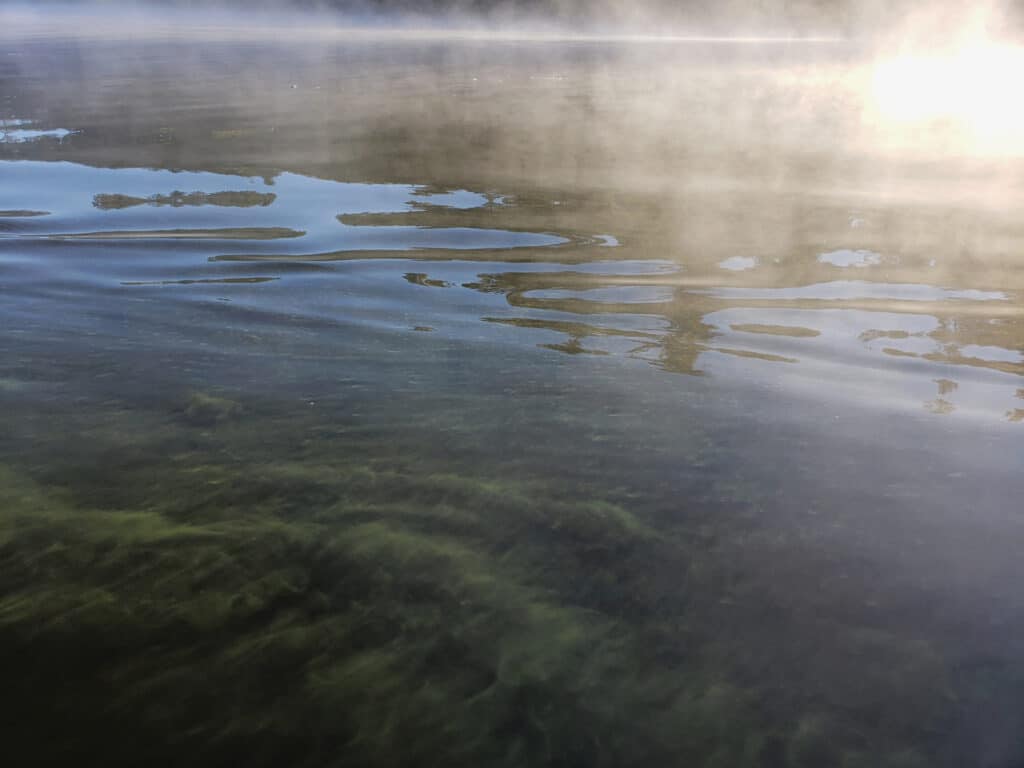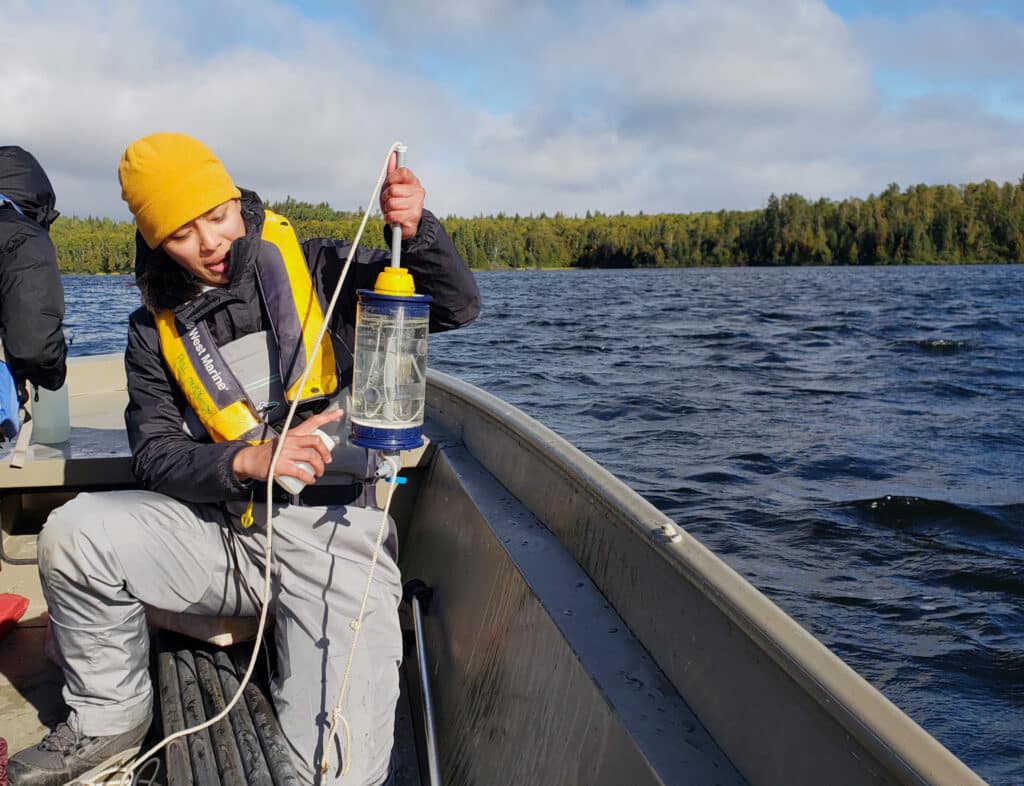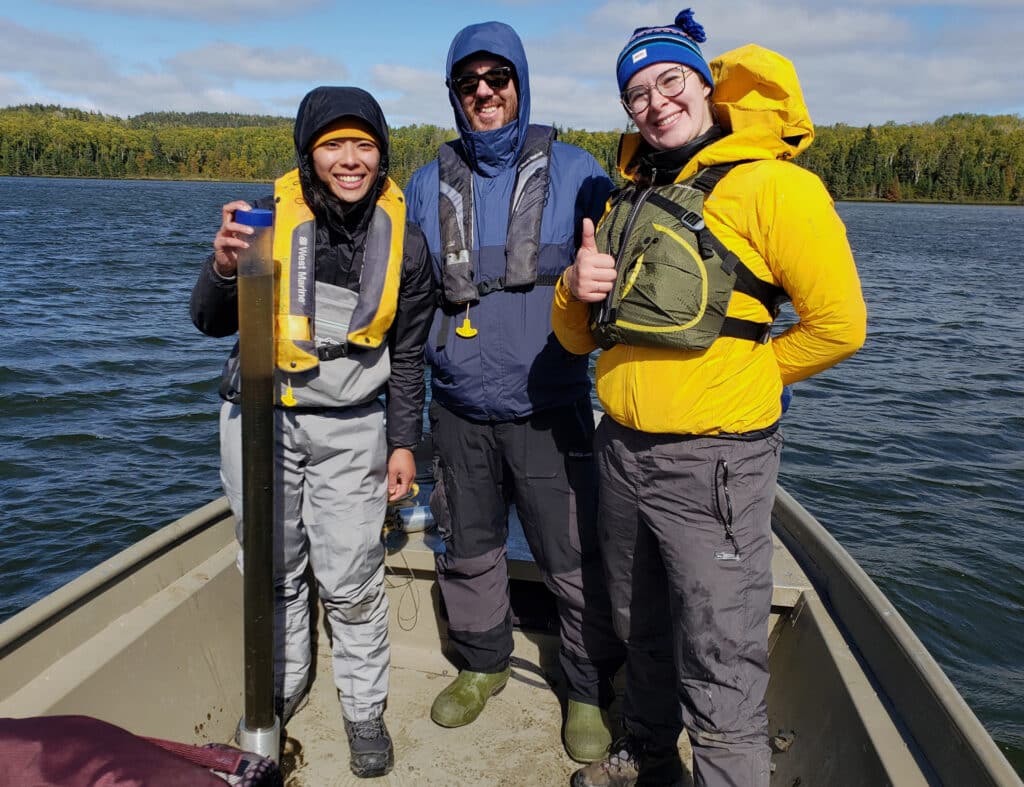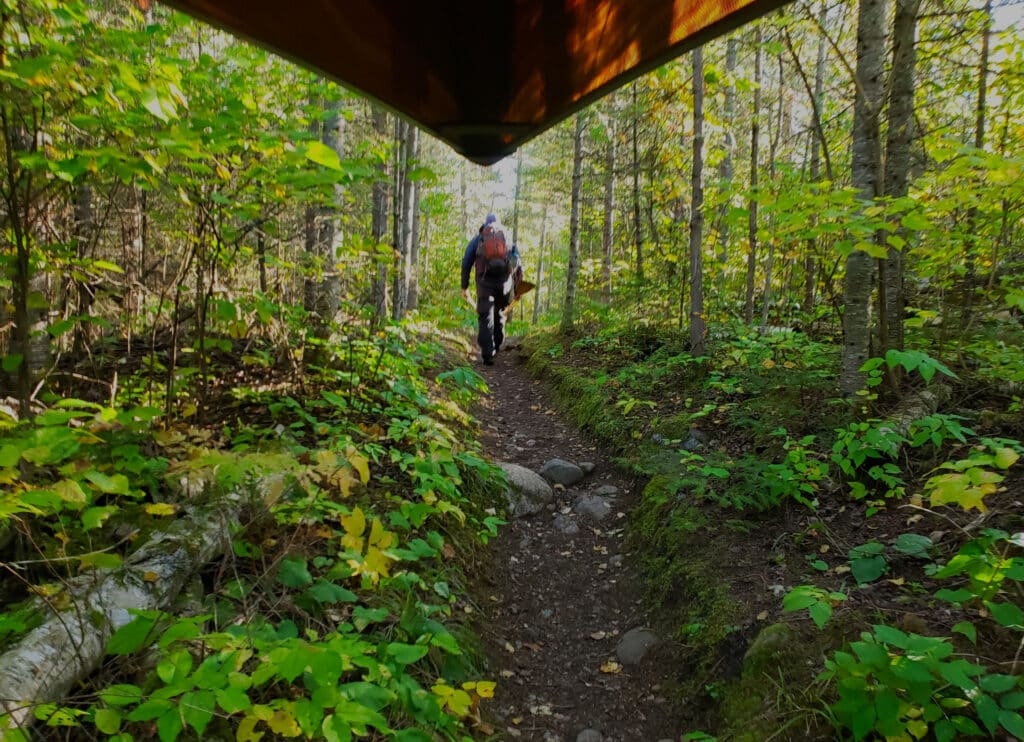EXCLUSIVE 2-PART FEATURE:
East and West Twin Lakes sit among wooded hills in the highlands above Lake Superior, several miles down narrow gravel roads, far from signs of civilization. There is a simple state forest campground with three sites, several small cabins on West Twin, and two beautiful bodies of wild water separated by a narrow isthmus.
On a chilly morning in late September, I met a team from the Science Museum of Minnesota between the lakes, where boat ramps face each other across a gravel road. The scientists are in the first year of an intensive investigation of eight lakes across northern Minnesota. East and West Twin lakes sharply illustrate the questions being considered. Roughly the same size and appearing similar to the naked eye, one lake has seen big blooms of harmful algae, and the other has not.

The crew included Drs. Adam Heathcote and Lienne Sethna and technician Amelia Wilson-Jackson. Also joining for the day was Amanda Weberg, a Cook County Soil and Water Conservation District staffer and Grand Marais resident, to give a hand, share local knowledge, and learn more about the condition of these lakes. The project is funded by the Minnesota Environment and Natural Resources Trust Fund, as recommended by the Legislative-Citizen Commission on Minnesota Resources.
The temperature was in the 30s and a breeze blew from the north, with golden aspen leaves decorating the slopes around the lakes. A sudden squall of snowflakes swirled around us, what we later determined was the first documented snow of the year in Minnesota, according to the National Weather Service in Duluth.
All of us wore winter outwear against the cold wind. The researchers loaded the boat with gear in a well-practiced routine, and then launched on West Twin and set off toward a predetermined set of coordinates.

Charting change
This was the fourth time the team had visited the lakes this year. They are collecting large amounts of data, hoping to find answers posed by previous research. Harmful algae are becoming a bigger problem in remote northern lakes, and prior studies have shown how waters thought to be pristine are changing, often drastically, with blooms bigger, more frequent, and possibly more dangerous. While blue-green algae, or cyanobacteria, exist almost everywhere on Earth, they create huge blooms only when they have the right amount of food and light. That’s when they can produce chemicals that contaminate waters for fishing, swimming, and drinking.
But how much these lakes are changing, and why, is complicated. This complex study seeks to increase understanding. That’s one reason why it was recommended by the Legislative-Citizen Commission on Minnesota Resources for state funding from the Minnesota Environment and Natural Resources Trust Fund.
Lienne navigated the boat through a narrow channel between islands on West Twin, and then over to a designated site in the deepest part of the lake. We were fully exposed to the wind now and pulled our hoods over our heads. Two anchors were deployed to keep us in position, and then the crew got to work. Everyone had a job collecting and processing samples and data. For half an hour, we danced around each other in the crowded boat, employing several standardized methods to get reliable data. Then came the big chore of the day: extracting a sediment core.

The research team will collect a tube of mud from the bottom of each lake over the course of the two-year study — today was the Twin Lakes’ turn. These tubes of mud will allow them to reconstruct the lake’s history, with deeper in the core correlating to further in the past. The scientists will analyze everything from fossilized algae to pigments left over from cyanobacteria, as well as radioactive particles to precisely date material that can be hundreds of years old.
Getting a good core is a specialized skill, but when done right, it preserves secret stories of these lakes. The depth was carefully measured, the device precisely configured. Then the apparatus was lowered to the lake bottom as metal rods were attached above. Finally, in one swift motion, the tube was pushed into the mud, and then back out, and brought to the surface. It was carefully stored for processing later in the day and back at the lab.
We pulled the anchors and motored back to the landing. The boat was briefly put on the trailer and then launched on the other side of the isthmus into East Twin Lake. It was warming up a little now. The routine was repeated, samples collected and another core of mud retrieved, with the scientists posing with it like a trophy fish.
There was no sign of algae on either lake. The water was blue under the autumn sky. The next day was different.

Wilderness waters
The temperature was in the twenties on the drive up the Sawbill Trail in the gray light near sunrise. Hot coffee was required. Everything was very still. Mist rose off the lake and blew across the water as we launched our two canoes on Sawbill Lake, with Adam in the bow of my boat. Between the two canoes, we carried all the gear needed to collect samples and measurements on three lakes in the Boundary Waters Canoe Area Wilderness.
The water under the mist was glassy and the canoes sliced through it, with the first rays of sunlight starting to hit the orange, yellow, and evergreen western shoreline. It was a spectacular time to be paddling.
Then we noticed the streaks of bright green on the surface of the lake — the telltale sign of cyanobacteria. These unique organisms can rise and fall in the water as they wish, and had gathered at the surface to soak up as much of the sun’s energy as they could. At night, they might descend to the bottom to retrieve nutrients like phosphorus and nitrogen found near the sediment.
Cyanobacteria have been around for more than three billion years. They were the first organisms to photosynthesize and created the first oxygen found in the atmosphere. They are an essential part of life on Earth. While mostly associated with warm, nutrient-rich waters, cyanobacteria blooms have also been observed for many years in some of northern Minnesota’s cold, clear lakes — under the right conditions. The team is studying what those conditions are, and how and why lakes could be changing.
What we saw on Sawbill was a light bloom, something that would dissipate with a little breeze, but it was still interesting to observe, and hinted at what was soon to come.
In Part Two: Blue-green lakes, subtle changes, and how the information collected will increase understanding of the past, present, and future of beloved Minnesota waters.
More information:
- St. Croix Watershed Research Station – Science Museum of Minnesota
- Boundary Waters algae blooms spark questions, concern – MPR News

